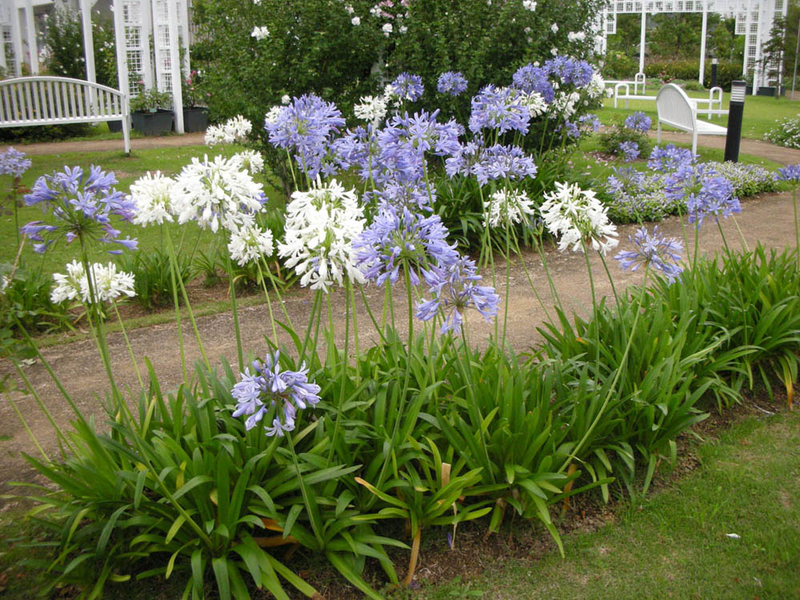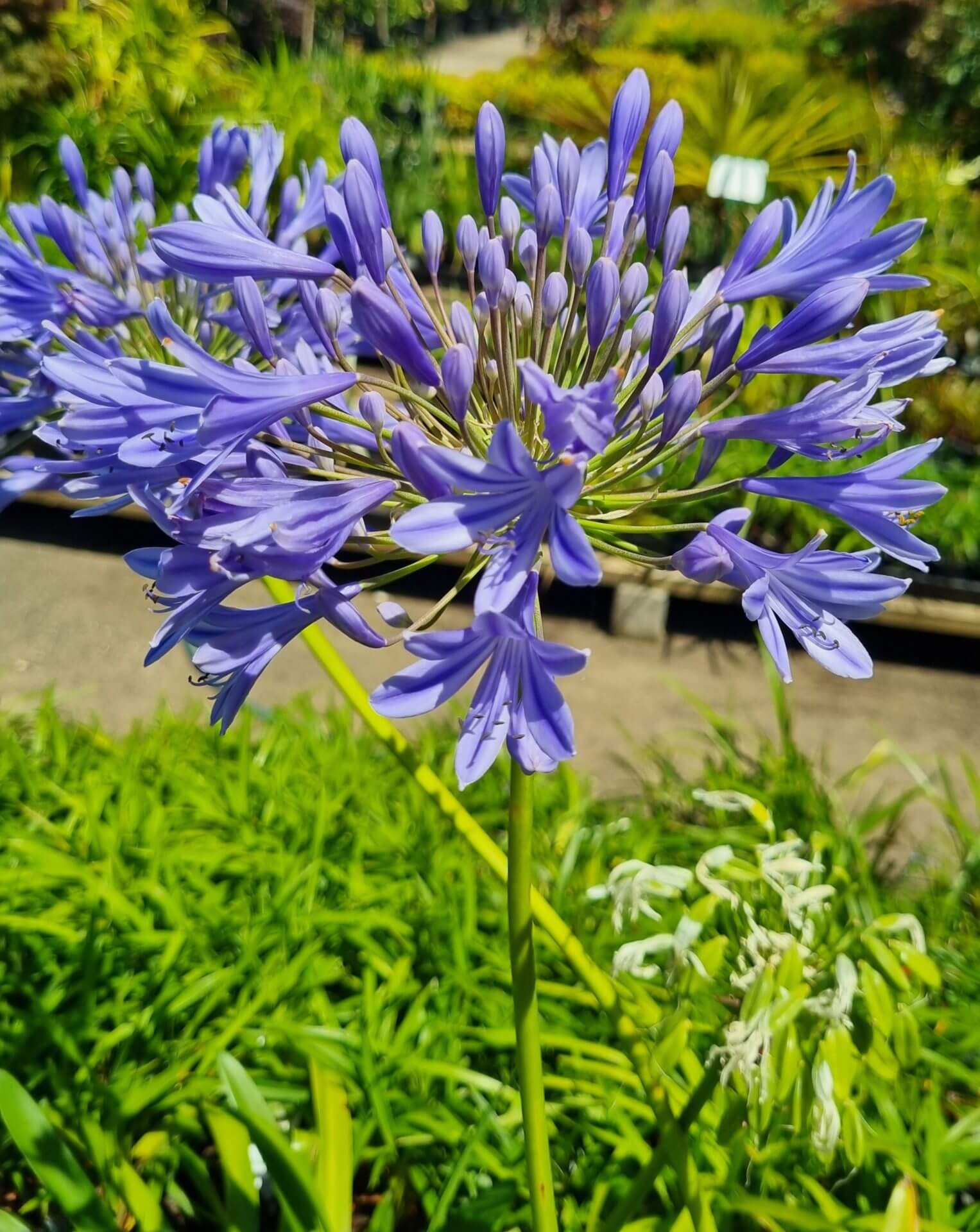Mastering the Art of Agapanthus Care: Essential Steps for Healthy Growth and Vivid Blossoms
In the world of horticulture, the growing of agapanthus stands as a satisfying undertaking for those that seek to nurture these elegant blooming plants. With their striking flowers and stylish foliage, agapanthus has captured the interest of garden enthusiasts worldwide. Nevertheless, achieving optimum growth and vibrant blooms calls for a nuanced method that includes numerous crucial actions. From choosing the right variety to mastering pruning strategies, the trip in the direction of growing prospering agapanthus plants is complex and holds the key to unlocking the full capacity of these agricultural treasures.

Picking the Right Agapanthus Range

When picking the ideal Agapanthus range for your yard, think about aspects such as climate suitability, blossom color, and growth habit. Agapanthus, typically known as Lily of the Nile or African lily, comes in a variety of shades ranging from shades of blue and purple to white. Pick a flower shade that matches your existing yard palette to develop a harmonious landscape. Furthermore, consider the environment in your area to make sure the Agapanthus range you pick can prosper in your specific conditions. Some selections are extra tolerant of chilly temperature levels, while others like warmer climates. Recognizing the development habit of various Agapanthus ranges is vital for proper placement within your yard. Some selections have a clumping growth routine, perfect for containers or borders, while others have a more spreading nature, ideal for ground cover or mass plantings. By very carefully assessing these factors, you can select the excellent Agapanthus selection to improve the elegance of your garden.
Perfect Planting Conditions
Considering the optimal environmental needs is important for effective Agapanthus farming. Agapanthus grows in well-draining dirt with a somewhat acidic to neutral pH degree. When growing, pick a place that gets full sunshine to partial shade. In hotter climates, providing some afternoon shade can protect against scorching of the fallen leaves. Agapanthus plants are delicate to cool temperature levels and should be shielded from frost during winter months.
To make sure healthy and balanced growth and lively blossoms, plant Agapanthus bulbs at a depth of concerning 2-4 inches and room them 8-12 inches apart. Adding natural issue, such as garden compost, to the soil can improve water drainage and fertility, promoting robust origin advancement. Mulching around the base of the plants helps retain dampness and subdues weed development. Routine watering is important, especially during the expanding season, to keep the soil consistently moist but not soaked.
Watering and Feeding Tips
Keeping appropriate wetness levels and giving necessary nutrients are key components in the treatment program for Agapanthus plants. When it comes to watering Agapanthus, it is critical to strike an equilibrium. These plants prefer consistently wet dirt but are susceptible to root rot if overwatered.
Fertilizing Agapanthus is vital for promoting healthy growth and prolific blossoms. Apply a balanced fertilizer, such as a 10-10-10 formula, in the early springtime as new growth arises. Repeat this application every 6-8 weeks throughout the growing season. Stay clear of extreme fertilizing, as it can bring about lush vegetation at the expenditure of blossoms. Constantly adhere to the manufacturer's guidelines for proper dilution and application methods. By complying with these watering and fertilizing tips, you can ensure your Agapanthus plants prosper and produce dynamic, durable blooms.
Trimming Methods for Agapanthus
Trimming Agapanthus plants at the proper times and with appropriate techniques is crucial for keeping their wellness and promoting ideal development and flowering. The optimal time to trim Agapanthus is in late winter season or early springtime prior to new growth arises.
Deadheading invested flowers can also reroute the plant's energy right into creating even more flowers instead than establishing seeds. If you want to collect seeds for propagation, leave some flowers to fully grown and completely dry on the plant.
Keep in mind to make use of clean, sharp devices to make accurate cuts and decrease the risk of introducing conditions. Agapanthus. Routine pruning will certainly help keep your Agapanthus looking cool and healthy while click here for more info ensuring a bountiful display screen of lovely blooms
Dealing With Typical Bugs and Diseases
After ensuring correct pruning techniques for Agapanthus, it is important to deal with typical parasites and conditions that can influence the health and vitality of these plants. Agapanthus plants are normally durable yet page can still come down with certain issues. One common parasite that impacts Agapanthus is the Agapanthus gall midge. This small, orange fly lays its eggs in the vegetation, causing distorted growth and flower buds that fail to open. To battle this insect, prune and ruin any afflicted plant components and think about making use of insecticidal soap.
Another typical concern is fungal fallen leave place, which presents as dark sores on the fallen leaves. To protect against fungal conditions, ensure excellent air flow around the plants, prevent above watering, and eliminate any type of contaminated fallen leaves without delay. Furthermore, Agapanthus plants can deal with root rot if they are planted in poorly draining dirt. To stop this, plant Agapanthus in well-draining soil and stay clear of overwatering. By being cautious and taking punctual activity against diseases and bugs, you can aid your Agapanthus plants flourish and create dynamic flowers.

Verdict
In final thought, understanding the art of agapanthus treatment entails selecting the best selection, offering optimal planting conditions, proper watering and fertilizing, appropriate trimming strategies, and addressing usual parasites and conditions. By complying with these essential steps, you read the full info here can guarantee healthy and balanced development and dynamic flowers for your agapanthus plants. Keep in mind to consistently check and preserve your plants to promote their overall wellness and long life.
To make sure healthy and balanced growth and lively flowers, plant Agapanthus bulbs at a depth of regarding 2-4 inches and room them 8-12 inches apart. By complying with these watering and fertilizing pointers, you can guarantee your Agapanthus plants grow and produce lively, durable flowers.
One common insect that affects Agapanthus is the Agapanthus gall midge. In addition, Agapanthus plants can experience from root rot if they are grown in poorly draining pipes soil. By adhering to these crucial actions, you can make sure healthy and balanced development and lively blooms for your agapanthus plants.